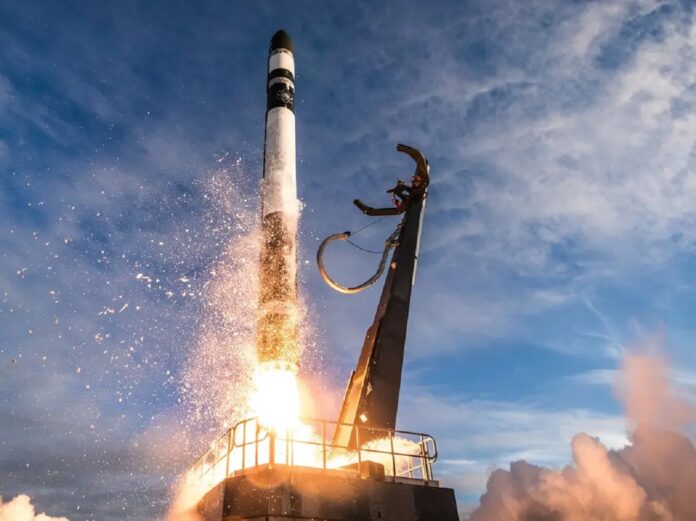California-based Rocket Lab is taking the next major step in evolving the Electron launch vehicle into a reusable rocket by launching a pre-flown Rutherford engine.
Previously flown on the ‘There and Back Again’ mission launched in May 2022, the 3D printed engine has undergone extensive qualification and acceptance testing to certify it for re-flight, including multiple full mission duration hot fires where the pre-flown engine performed flawlessly and on par with a new Rutherford engine. With Rocket Lab’s propulsion team now giving the engine the green light for re-flight, it will be launched on an upcoming commercial mission scheduled for lift-off in the third quarter of this year.
While the engine is ready for re-flight now, the Electron rockets scheduled for launch in the second quarter are already built with complete Rutherford powerpack assemblies, so this pre-flown engine will join the production line to be integrated with an in-progress rocket. The engine is one of several recovered Rutherford engines that collectively have now been through many successful full-duration hot fires to support testing and R&D efforts for recovery. It joins multiple systems that have been re-flown on Electron, including helium press systems.
Re-flying this engine is the latest milestone in an iterative and methodical reusability program that has seen Rocket Lab recover hardware and the first stages from six Electron missions to date. Rocket Lab has been iteratively developing and testing two recovery methods in parallel: marine recovery, where Electron’s first stage returns to Earth under a parachute for a soft ocean splashdown and recovery by boat, and mid-air recovery, where Electron’s first stage is caught in the air by a specialized helicopter as the stage descends back to Earth under a parachute.
Extensive analysis of returned stages shows that Electron withstands an ocean splashdown, and engineers expect future complete stages to pass qualification and acceptance testing for re-flight with minimal refurbishment.
As a result, Rocket Lab is moving forward with marine operations as the primary method of recovering Electron for re-flight. This is expected to take the number of Electron missions suitable for recovery from around 50% to between 60-70% of missions due to fewer weather constraints faced by marine recovery vs mid-air capture while also reducing costs associated with helicopter operations. The company will assess the opportunities for flying a complete pre-flown first-stage booster following the launch of the pre-flown Rutherford engine in the third quarter of this year.
“Reusability for small rockets is immensely challenging as they simply don’t have the fuel margins that larger rockets have to enable propulsive landing,” said Rocket Lab founder and CEO Peter Beck. “Despite this significant technical hurdle, our team has poured relentless innovation into our reusability program and proven it’s possible to bring home small rockets and run the engines as good as new. This is a major technical achievement and sets a new standard for small launch vehicles globally.”
